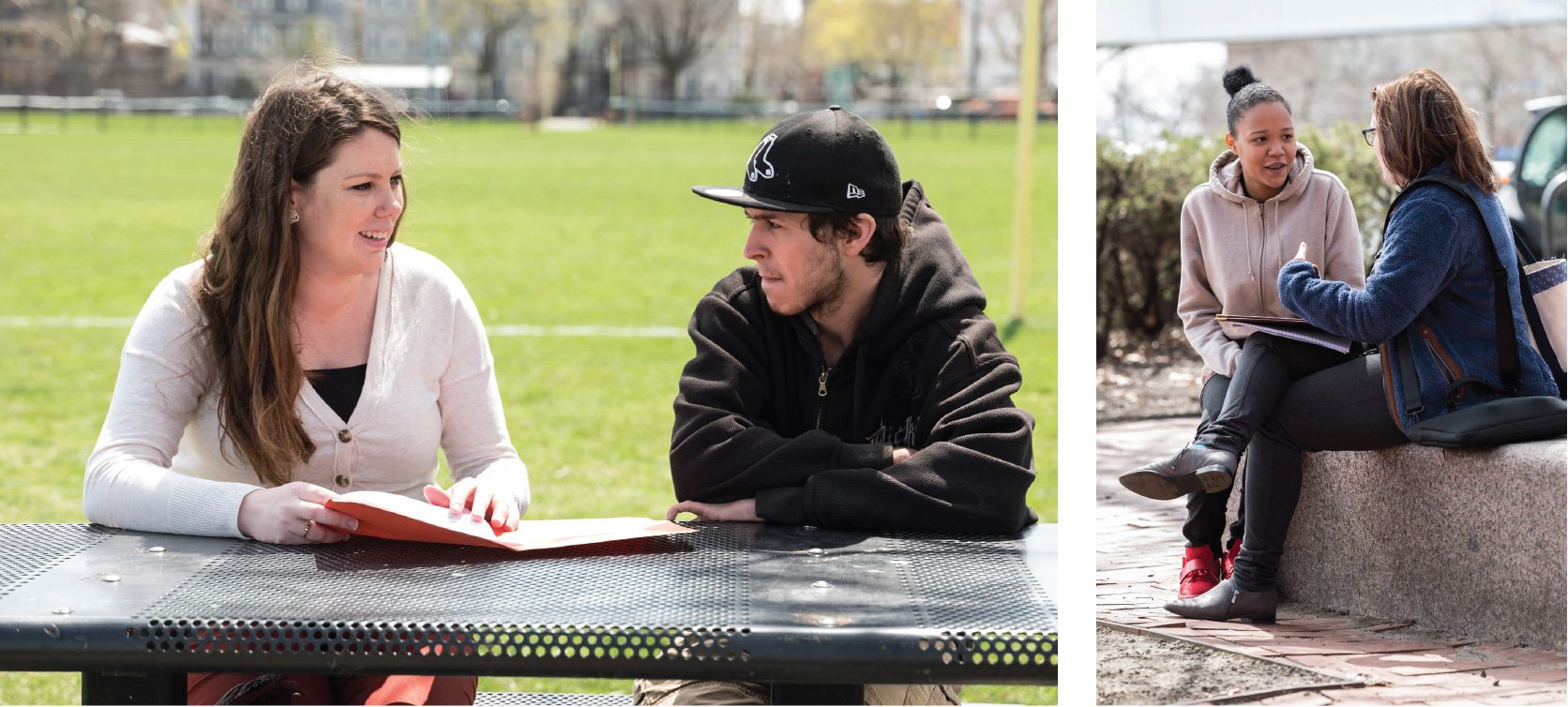NONPROFIT MAKING AN IMPACT

“I actually lived on my own from when I was 15 until I was 17. I was homeless for a while. I was sexually molested by one of my mother’s various boyfriends. My brother. I watched him get beat all the time. That’s why I left. I was just fed up with it. The [YVLifeSet] program believed in me when no one else believed in me. It gave me the courage and motivation to apply to school. [My counselor] helped me realize that not only was I passionate about science but I could do a lot with it. Now I realize science is probably what I’m going to do for the rest of my life. When [YVLifeSet] came into my life, they gave me the motivation I needed and the resources to help me. I wouldn’t be here if it wasn’t for them.”
-Angelica, Youth Villages/YVLifeSet participant
WHAT IT DOES
Approximately 23,000 young adults in the U.S. age out of the foster care system every year. One in four experience homelessness, half end up unemployed, and close to 70% have been involved in the criminal justice system. YVLifeSet is an intensive 6- to 12-month intervention program.
Participants meet one-on-one with a specialist at least once a week in settings convenient to them, such as their home, school, job, or doctor’s office. In addition to weekly meetings, YVLifeSet provides 24/7 on-call support. Participants set their own goals for housing, education, employment, and other aspects of independent life. YVLifeSet specialists meet the young adults where they are—whether learning to do laundry, role playing conflicts with roommates, or practicing job interviews. The YVLifeSet specialist does not provide direct supports like housing or a job, but rather helps the youth develop the skills and capabilities to identify and put into place supports on his or her own.
HOW EFFECTIVE IS IT
Compared to a randomly-selected control group, YVLifeSet participants experienced measurable positive changes, including a 30% decrease in violent relationships, 22% decline in homelessness, and a 17% increase in earnings from formal work in year one of a two-year study. Year two of the study did not track all outcomes; the limited results indicated that improvement in earnings was less conclusive. Nonetheless, year one results are impressive, because few programs working with this population have demonstrated any positive results at all. The cost of moving a young adult through the program is about $12,000—well below the estimated $20,000 to $50,000 communities pay in social welfare costs for a chronically homeless person.
LIFE CHANGES
Compared to a randomly-selected control group, YVLifeSet participants experienced measurable positive changes, including increased earnings and declines in housing instability, economic hardship, mental health problems, and violent relationships.
Year 1 Impact of YVLifeSet

Note: Results are from year one of a two-year study. Year two of the study did not track all outcomes.
Source: Data from Valentine, Skemer, and Courtney (2015); https://www.mdrc.org/sites/default/files/Becoming_Adults_FR.pdf
HOW YOU CAN HELP
There are no dedicated public funding streams for this type of program; philanthropy covers 50% to 100% of the cost, depending on the jurisdiction. Philanthropic dollars provide YVLifeSet with the flexibility to better meet diverse youth needs. For example, many state contracts include funding for a maximum of six months. Philanthropy means that participants who need another two to three months to reach independence are not arbitrarily kicked out. Philanthropic funds also provide wrap-around services—sometimes for something as simple as a $100 monthly bus pass to get to work. Finally, donor support has been key to bringing YVLifeSet to new locations. You can help cover the cost of providing YVLifeSet by donating to Youth Villages nationally or find a local program on their website.
RELATED POLICIES & PARTNERSHIPS YOU CAN SUPPORT
In addition to supporting organizations that work directly with former foster youth, donors can also make a difference through efforts to improve the foster care system. One effective, relatively straightforward way to address aging out is to support policies that allow youth to stay in foster care after 18 years of age. A Midwest study comparing outcomes in Illinois, Iowa, and Wisconsin estimated that extending foster care to age 21 can double rates of college enrollment and graduation. It can also increase lifetime earnings by about $72,000 per youth, a return of about $2 per every $1 invested by the state.
The federal Fostering Connections to Success and Increasing Adoptions Act of 2008 grants funding to states for extending foster care to 21, but states must enact these policies themselves. The most effective policies are designed through collaboration with many stakeholders. They include developmentally appropriate services that involve the young person in decision-making in areas such as future planning and employment help, options for exit, and reentry to “try out” independent living.
